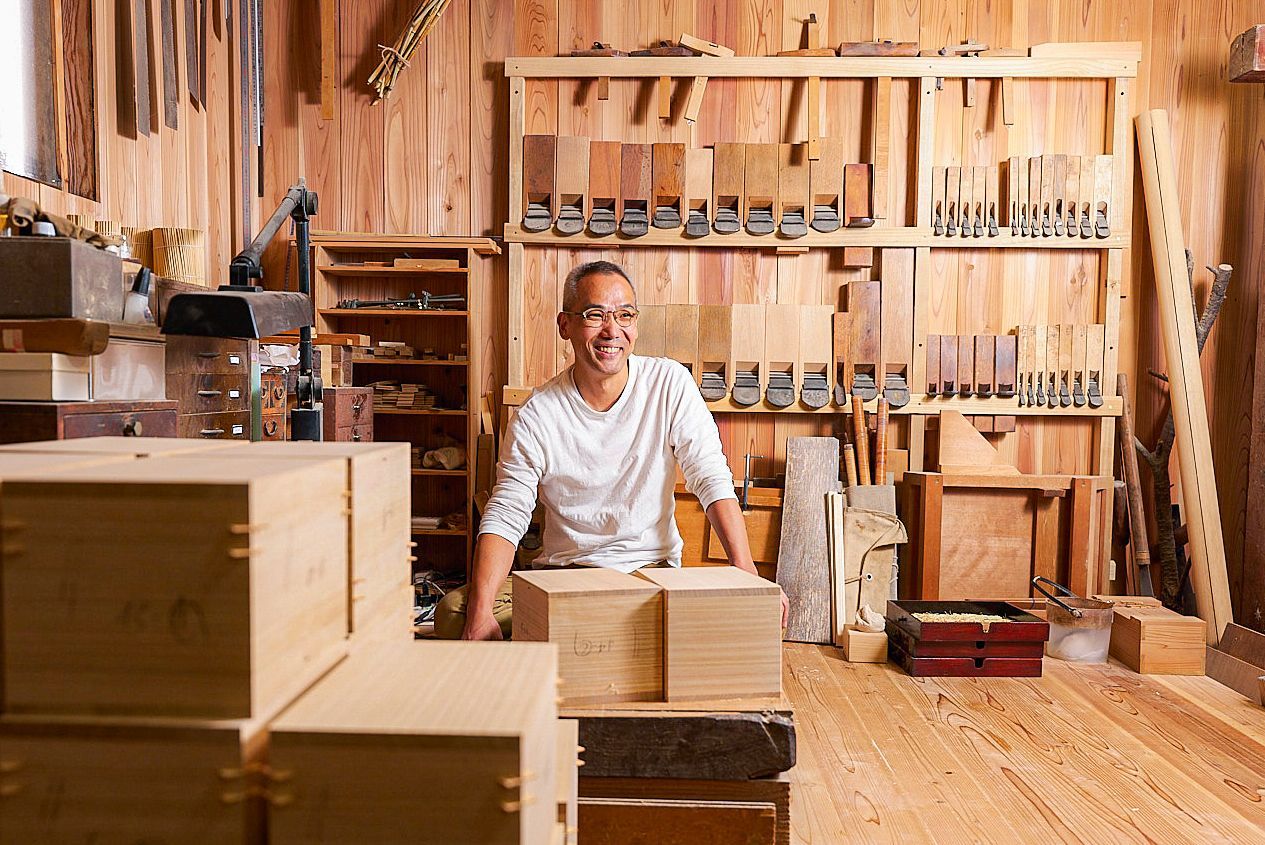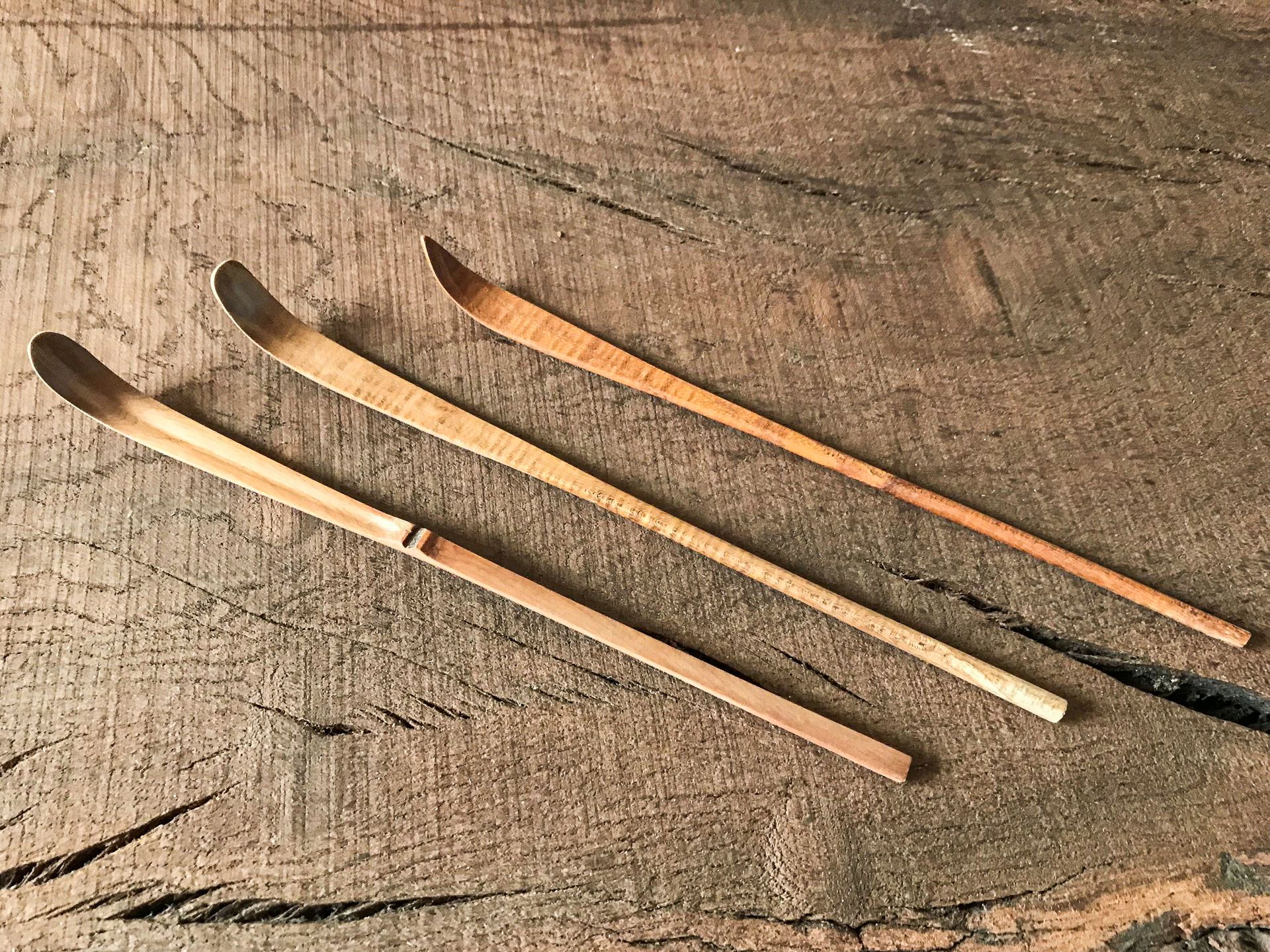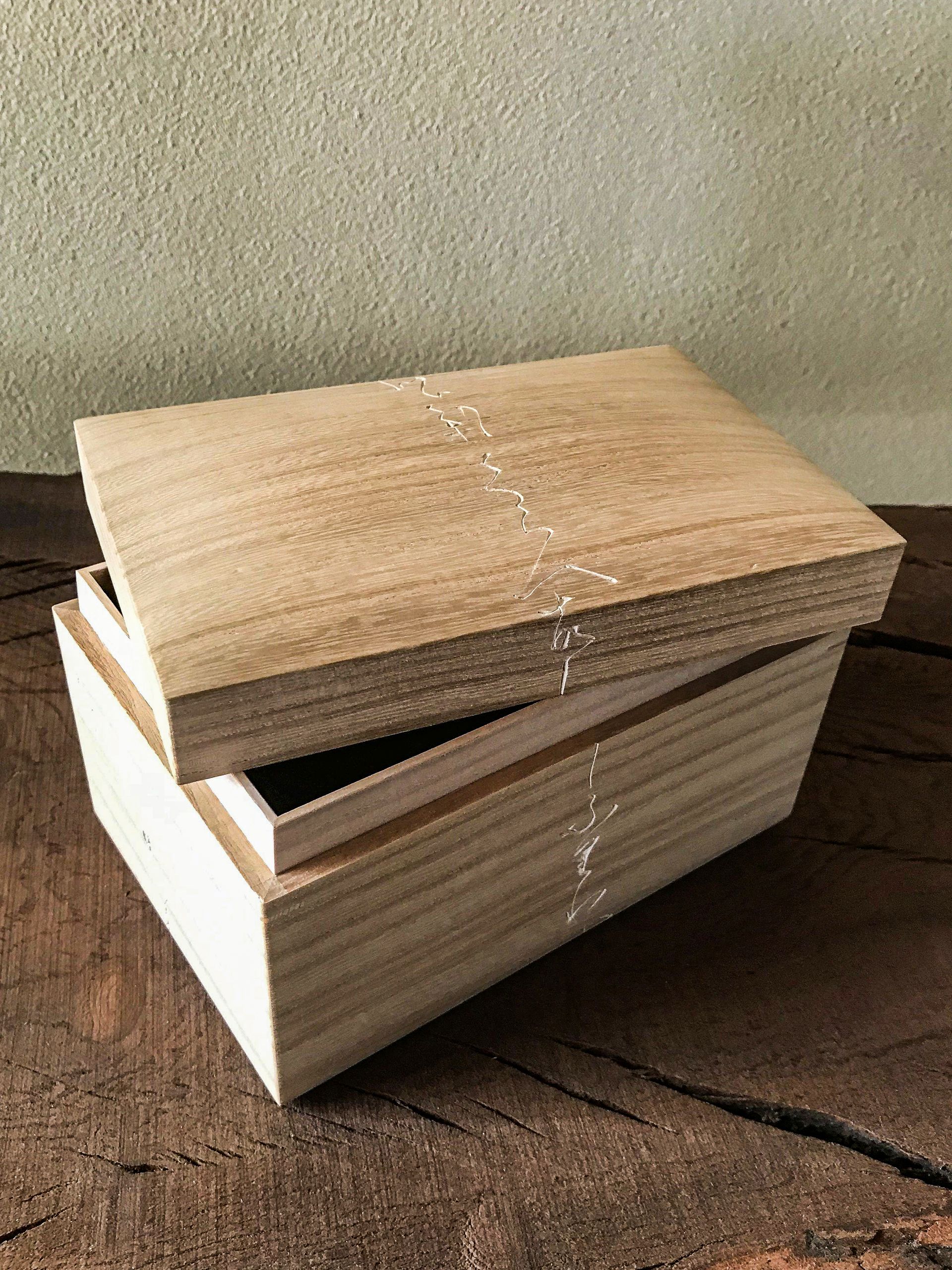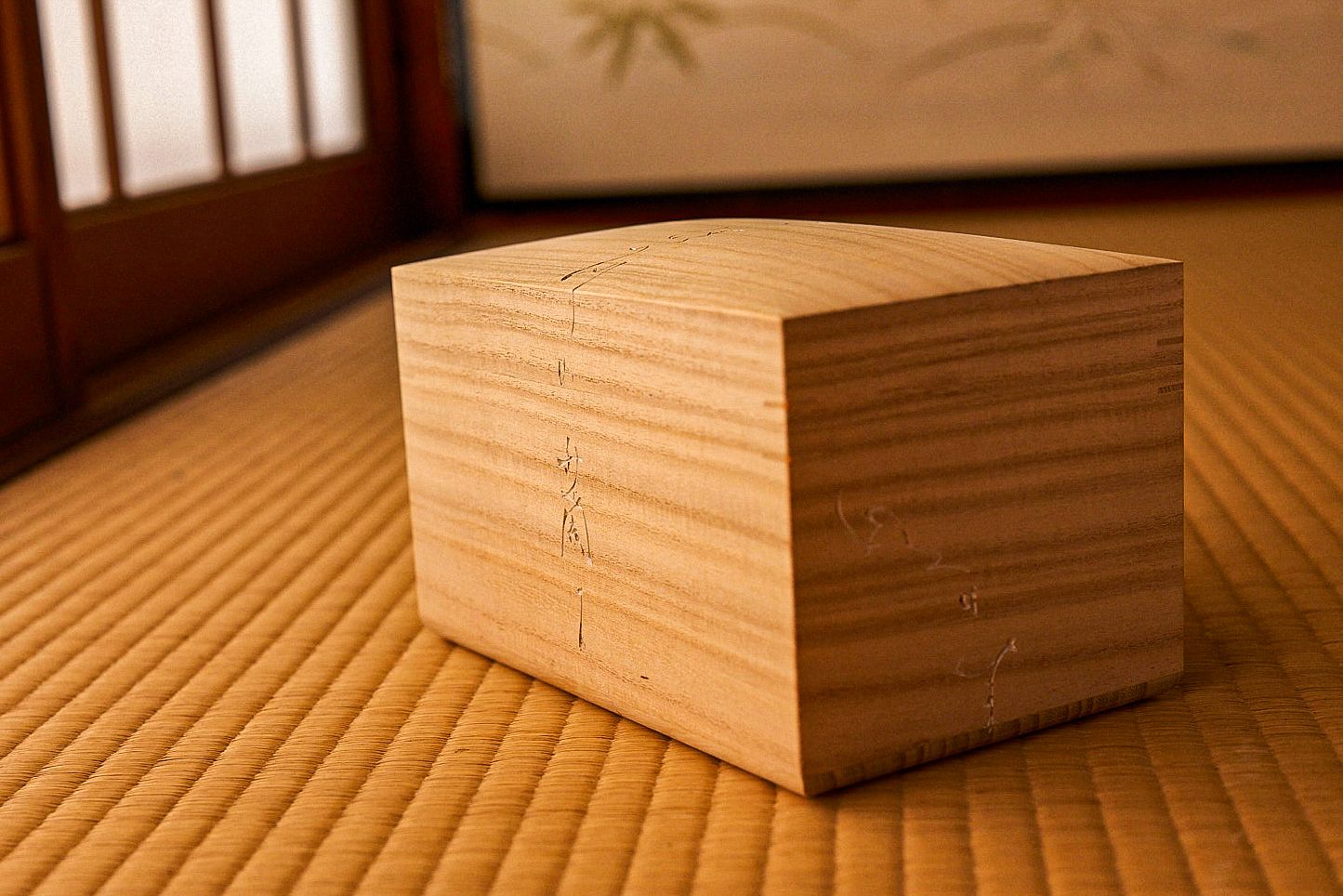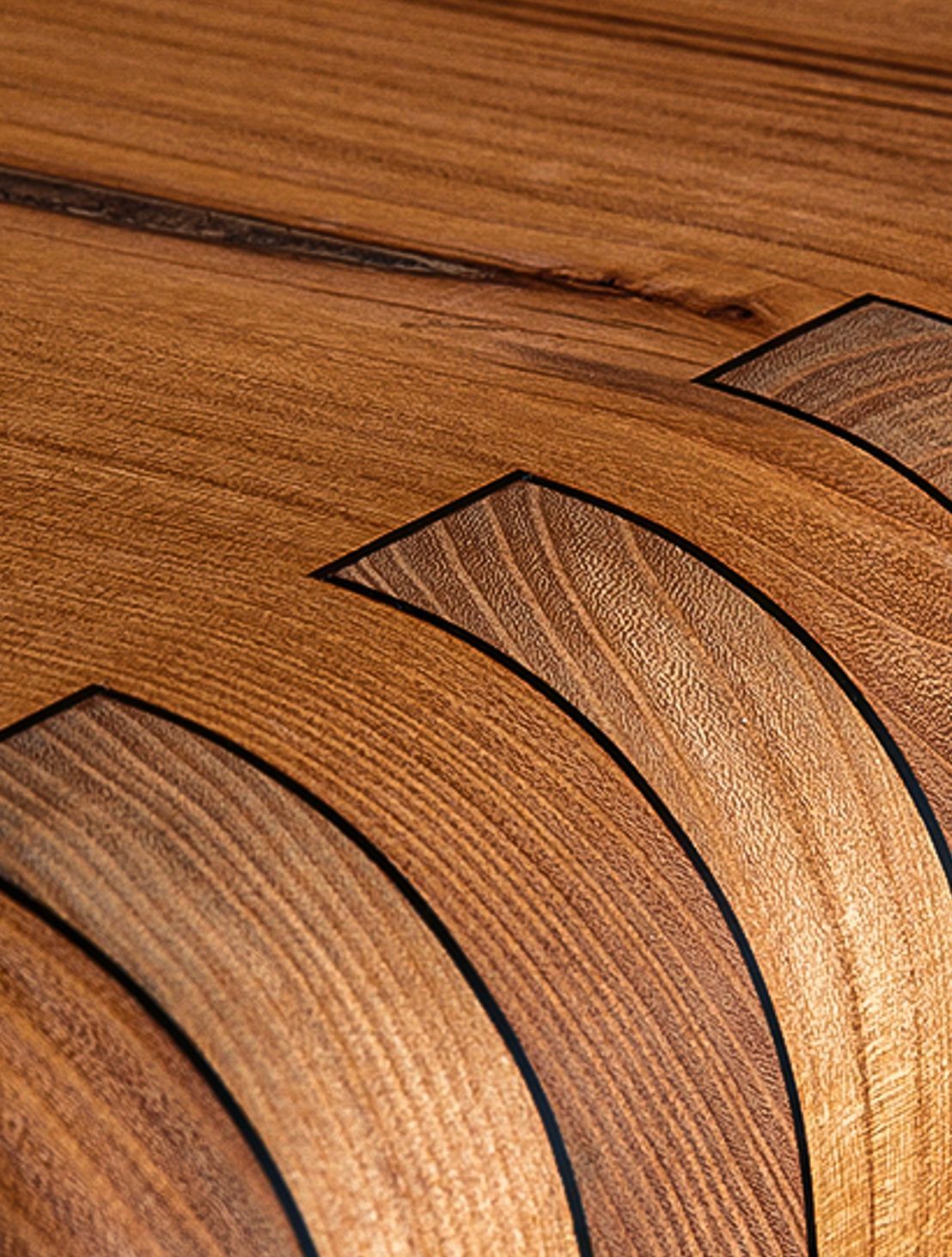Click Image to Enlarge
Write whatever you want about this artwork.
This low table is made from paulownia wood, a versatile material favored by Japanese craftspeople for both its beauty and durability. This strong and stable wood is warp-resistant and has the highest strength-to-weight ratio of any forest product. The joinery is accented with a thin layer of black persimmon wood.
Tomoya HYODO
Sashimono (Fine Wood Crafting) ・ Kyoto
-
Artist's Story
Sashimono master Tomoya HYODO lives in the idyllic country town of Keihoku-cho, outside of Kyoto, in a simple traditional wooden house. It is his dream to revitalize the refined culture of traditional Kyoto. There are very few sashimono (fine wood crafting) artisans left in Japan today, especially at his level, and he wants to train young apprentices to continue this tradition in the future.
Hyodo was born in 1974 and raised in Kyoto. While studying furniture making at a trade school, he encountered a small sashimono box while visiting a producer of wooden boxes for tea-ceremony untensils. The passion for "precision beauty" he experienced on that visit changed his life's course, and he became completely engrossed in sashimono.
Sashimono is wood crafting at its highest level. Produced without nails, it includes fitted boxes for especially fine masterworks of craft such as ceramics, metal, bamboo, figurative art, lacquer ware, kimono and more. Sashimono also includes various stands and furniture and the intricate parts of fine scrolls.
-
About the Craft
Sashimino 指物 is wood crafting at its highest level. Produced without nails, sashimono includes fitted boxes for especially fine masterworks of craft such as ceramics, metal, bamboo, figurative art, lacquerware, kimono and more. Sashimono also includes various stands and furniture and the intricate parts of fine scrolls. This craft is based on a reverence for wood, working in cooperation with nature rather than fighting it.
Precise joinery construction results in remarkable durability and longevity. Historically, Japanese craftsmen relied on joinery because originally iron was not readily available in Japan. Hozo grooves are carved into the wood to join two pieces with perfect slots (mortises) in a way that is not visible. Though often thought of as simple, the wood joints can be highly complex, such as with tsunagi that incorporates highly refined geometric patterns. There are dozens of joint types, ranging in complexity from very simple to highly complicated.
There are three kinds of sashimono:
1. Kyo sashimono:
Cabinets, boxes for tea ceremony implements, furniture originally created for the Imperial and aristocratic classes that tends to be ornate, using gold leaf and urushi lacquer.
2. Edo sashimono:
Originally produced for the samurai elite and wealthy merchants, it appears delicate, yet the joinery hidden from the user makes it very sturdy.
3. Osaka sashimono:
Made in Osaka prefecture this includes furniture and other household pieces traditionally made from Southeast Asia wood such as Chinese quince, Bombay black wood, rosewood, and ebony.
Sashimono boxes are known for their precision closing lids. Unlike hardwoods that lock out air, paulownia wood boxes allow the air to flow through into the box; it is also heat and moisture resistant. On very humid days the paulownia wood absorbs the moisture but does not allow it to enter the box. When humidity drops the wood dries allowing air to flow through into the box again. This is important for reducing mold or mildew inside the boxes.
Boxes in Japan are used to establish the provenance of an art piece. The maker of the piece contained inside will usually sign the box. For example, the box lid for an item used in tea ceremony contains information about the artwork written in calligraphy by the artist and is displayed for tea guests to understand the history of the piece. A work of art without a box can lose a significant part of its value – in some cases up to 50 percent – so retaining the box is very important for not only establishing the provenance but also for protecting the piece.
Since boxes are stackable, they are much easier to store than unboxed pieces so many pieces can be stored in a small place. Also, boxes make shipping easier.
-
Click Image to Enlarge
ButtonChashaku scoops for the Japanese tea ceremony. Though normally made of bamboo, these are crafted from wood.
-
Click Image to Enlarge
ButtonThe shape of this box was inspired by a piece in the famous Shosoin repository of treasures. The outside is made of paulownia wood; the inside is Jindaisugi, cedar buried in volcanic ash for over a thousand years.
-
Click Image to Enlarge
ButtonThis paulonia chabako box was made to hold a tea bowl and simple implements. The calligraphic carving is a lovely poem from the 1000-year-old Tales of Ise, of Japanese classic literature, giving voice to a young couple exchanging their mutual love from afar, where they recall their youth and reflect on how they have since grown.
-
Click Image to Enlarge
ButtonThis chabako box for a tea bowl and simple implements, is made of extremely rare piece of paulownia taken from the base of the tree and showing unusual grain.
-
Click Image to Enlarge
ButtonAnother view of the chabako box shown above, made of unusual paulownia wood.
-
Click Image to Enlarge
ButtonAnother view of the Jindaisugi box shown above. The outside is made of paulownia wood.
-
Click Image to Enlarge
ButtonAnother view of the above chabako box made of unusual Paulownia wood.
-
Button
Detail of the joinery of the low table shown above.


